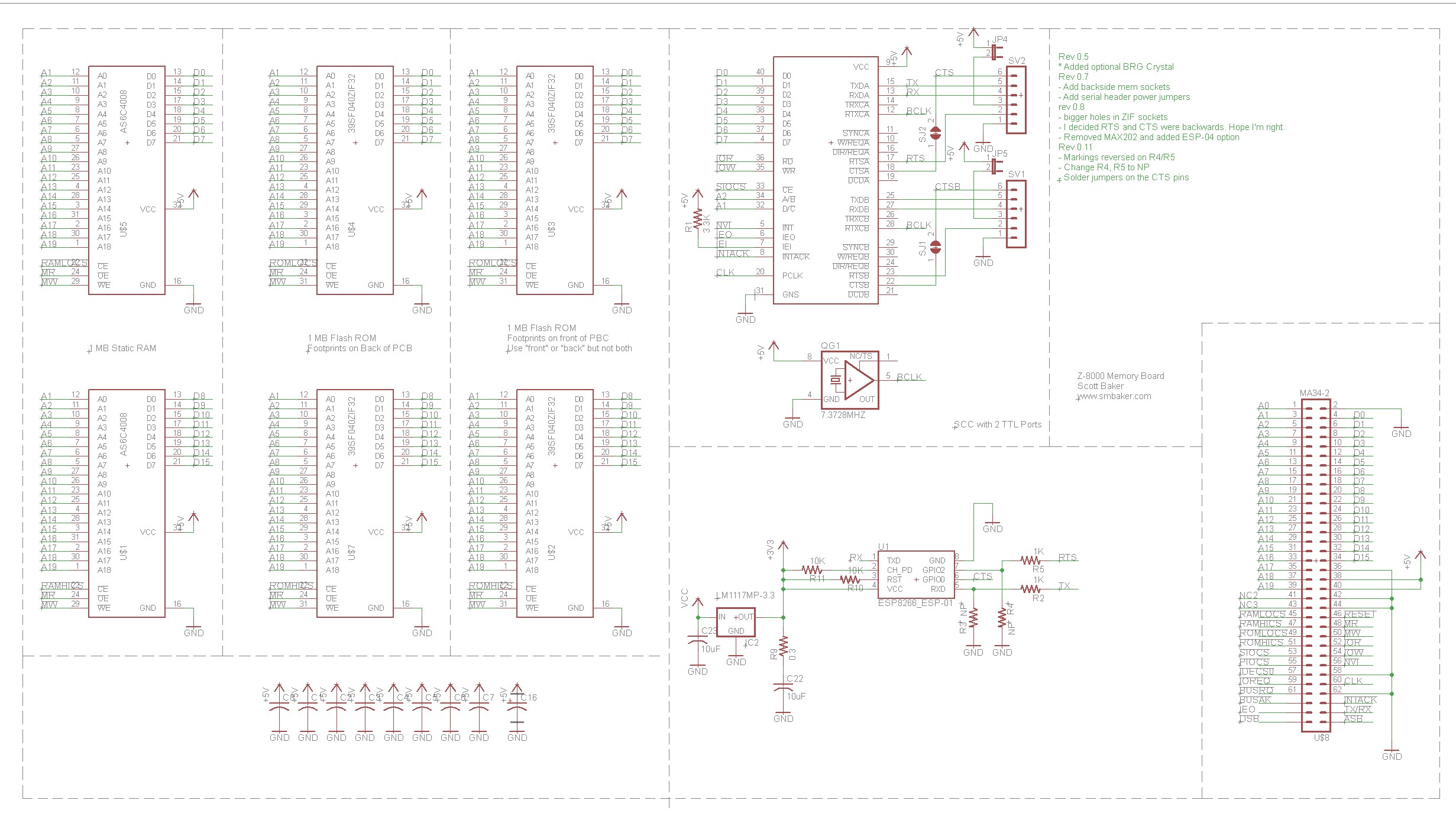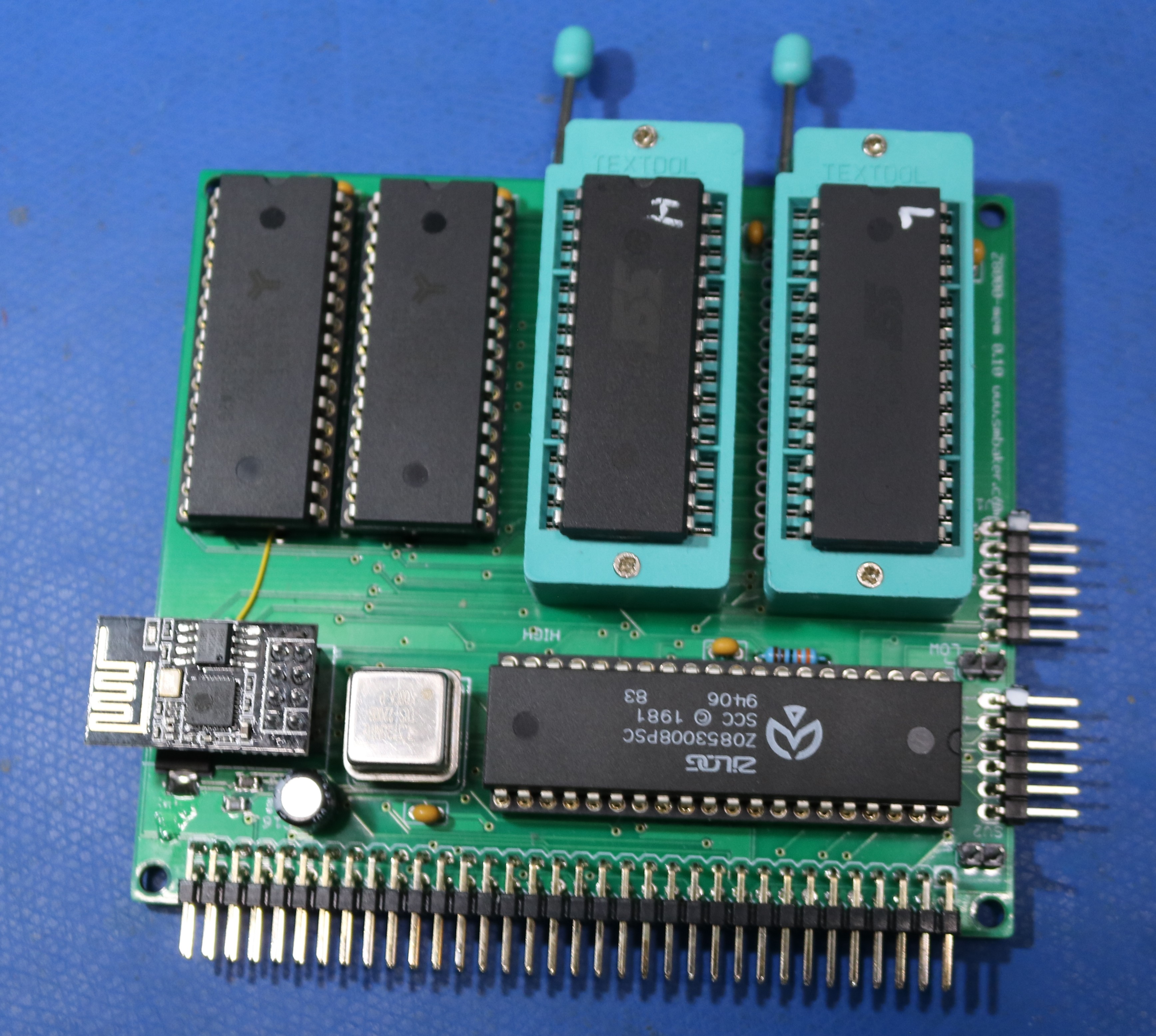This is part of the series on the Z8000 Modular Computer. To learn more about the Z8000 Modular Computer, to get started, please start with the overview and the videos on the Blog Page.
Click here to return to the Z8000 master board index.
The Memory and IO board is a necessary component of the computer. Without memory and IO, the CPU can’t do a whole lot. The Memory and IO board adds the following:
- 1 Megabyte of static RAM. This RAM is broken down as follows:
- 64 KB for CP/M system
- 64 KB for user programs
- 64 KB additional for user programs operating in split I/D mode
- 64 KB for locating the DDT debugger
- Approximate 768 KB for use as a RAM Disk
- 1 Megabyte of Flash (referred to as “ROM” hereafter, as that’s how we shall make use of it). It’s used as follows:
- 64 KB for the boot loader and monitor
- 960 KB as a ROM disk, holding the CP/M system as well as user programs and data
- Z8530 SIO serial I/O chip offering two serial ports
- Port 0: Can use an ESP01 ESP8266 module for serial communications, or a 6-pin FTDI cable, or a daughter board for a honest real vintage DE9 RS232 port.
- Port 1: Can use a 6-pin FTDI cable, or a daughter board for another real vintage “back in the day” DE9 RS232 Port. (and yes, you’re right a DB25 would have been better, but DB25s are just too darned big)
If you put the CPU Board and the Memory/IO Board together, then you have a working Z8000 computer
Schematic
The schematic is shown below:

Click it to make it bigger, or go hunt down the PDF in the git repo.
Note that two sets of Flash sockets are presents, one on the back and one on the front. Use whichever makes sense for your applications (stacked configuration and brick configuration, the back socket will make using ZIFs convenient)
Bill of Materials (BOM)
Even loftier ambitions would be to fill out more than one BOM section…
Board Image

As you can see, this board has the ESP8266 fitted. If you’re using the ESP8266, make sure not to use the associated 6-pin FTDI header.